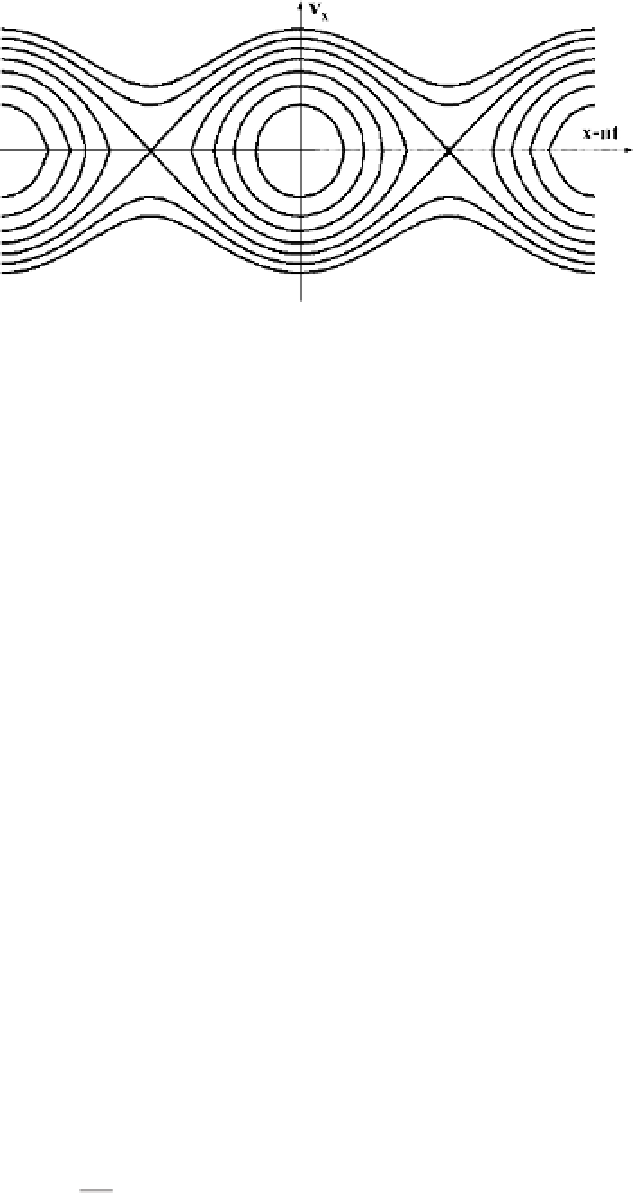Environmental Engineering Reference
In-Depth Information
Figure 5.10
Trajectories of electrons in their phase space when electrons interact with plasma
oscillations. Captured electrons have closed trajectories.
where
v
p
/
k
is the phase velocity of the wave. The characteristic velocity of
captured electrons in the frame of reference being considered is
u
D
ω
(
e
'
/
m
e
)
1/2
,
where
is the amplitude of the scalar potential of the wave. We assume that col-
lisions of a captured electron with other plasma electrons occur often enough that
the captured electron can reflect only once from the potential wall of the wave. The
electron obtains energy from the plasma electrons and escapes from the potential
well. This means that the rate of collisions with plasma electrons is greater than the
frequency of oscillations of the captured electron in the potential well of the wave.
The rate of electron-electron collisions follows from (2.38) and is of the order of
N
e
e
4
T
3/
e
m
1/2
'
ln
Λ
, an
d the
frequenc
y of o
scillations
of captured electrons is of
the order of
p
e
e
p
eE
0
k
/
m
e
p
N
0
e
2
/
m
e
,where
k
isthewavenum-
'
k
/
m
e
,
E
0
,and
N
0
are the corresponding parameters of the
oscillation. This gives the condition
N
0
N
e
ber of the oscillation, and
'
N
e
e
6
T
e
(5.87)
for the interaction between captured electrons and the wave.
Assuming this criterion to be satisfied, we now find the character of the energy
exchange between the wave and plasma electrons. In the first approximation, the
electron distribution function is not altered by the interaction with the wave, and it
is necessary to compare the number of electrons with velocity
C
u
that transfer
v
p
energy to the wave and the number of electrons with velocity
u
that take energy
from the wave, where
u
is a positive quantity. The number of captured electrons is
proportional to the electron distribution function
f
(
v
).Hence,thewavegivesits
energy to electrons and is damped if
f
(
v
p
v
p
C
u
)islargerthan
f
(
v
p
u
). This means
that the wave is damped when
@
f
@
v
x
D
v
p
<
0 .
(5.88)
v
x
Here
v
x
is the component of the electron velocity in the direction of the wave prop-
agation, and the derivative is taken for the electron velocity being equal to the phase

